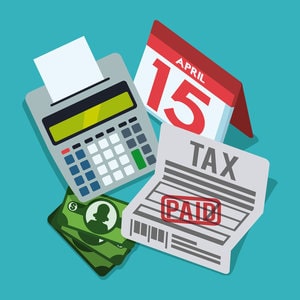 Tax Schedules You Need to Know About
Tax Schedules You Need to Know About
Most people know tax schedules as the forms named by different letters. What exactly are tax schedules? They are additional forms that the IRS requires you to submit. Tax schedules are usually required when you have certain types of income or deductions that must be accounted for or calculated. In this article, we will go over the 5 most common tax schedules and the different purposes of these forms.
Schedule A
This tax schedule is used when you choose to itemize deductions. Everyone has the option to choose the standard deduction amount and forgo needing to use this form. However, if your deductions amount to more than the standard deduction, you will benefit from using a Schedule A.
Schedule A has 7 different categories of deductions:
- Medical and Dental Expenses
- Taxes
- Interest
- Gifts to Charity
- Casualty and Theft Losses
- Job Expenses
- Miscellaneous Expenses
There are different requirements and limitations on what you can deduct in each of these categories. Your tax preparer will know these rules and can help you deduct the expenses correctly.
Schedule B
The purpose of filing a Schedule B is to report any interest and dividend income you received during the year. You will most likely need to file a Schedule B if you earned more than $1,500.00 in interest or dividend income. If you receive less than $1,500.00 you will still have to pay taxes, but you will not need to complete a Schedule B. Instead you would put the information on your main tax form.
Schedule C
If you are self-employed you would use Schedule C to report your business income and losses. Typically, this form goes hand in hand with a Schedule SE (for self-employment tax). There are 5 parts to this form.
- In this part, you will all your business income and calculate your gross profit.
- Here you will list your total business expenses. Then you will subtract your total expenses from your gross profit to calculate your net profit or net loss.
- This part will be used if you keep an inventory for your business.
- You use this part to claim any deductions related to car expenses.
- This part is used to list and deduct any expenses that are not included in Part 2.
Schedule D
You will need to file a Schedule D if you have had any capital gains or losses on the sale or trade of any capital assets. What exactly are capital asset transactions? First of all, capital assets include such things as your home, car, artwork, collectibles, stocks, bonds, etc. Selling a capital asset for more than what you paid for it originally will require you to pay taxes on the additional amount you earned. There are several different variables that go into calculating how much you will pay, such as how long you owned the property for. Your tax preparer can help you to calculate all the variables so that you are paying the correct tax amount. However, it works the opposite way as well. If you sell a capital asset for less than you paid for, you earn a deduction on your taxes.
Schedule SE
If you are filing a Schedule C, you will also need to file a Schedule SE. This schedule will help you to calculate the amount of unemployment tax you must pay. This amount is incorporated in the “Other Taxes” section of your 1040.
These are only 5 of about 15 different tax schedules. As you can see, taxes can get very complicated. As a result, hiring an experienced tax preparer can be extremely important. They can help you to navigate all the different tax schedules and forms. Their expertise will ensure that you pay the exact amount that you owe, and no more.






Leave A Comment
You must be logged in to post a comment.